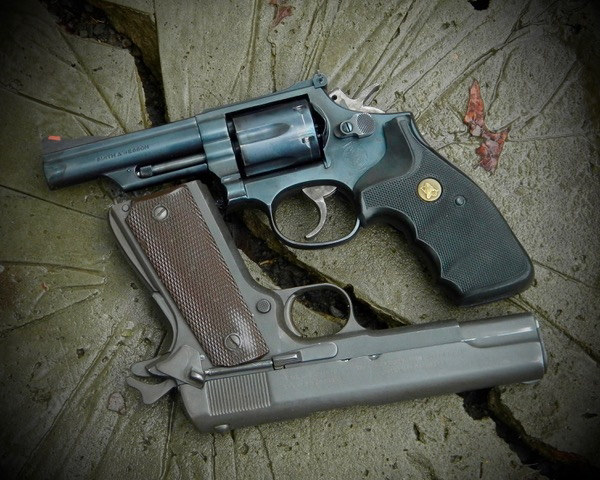
This week we’re looking at “combative” publications from the mid 1900’s. In these works, written by men with plenty of experience, we see the beginnings of an understanding of combative and defensive shooting. There’s a focus on “combat” shooting, as opposed to “marksmanship” drills. Equipment is examined with a specific eye to gun-fighting. And, writers beginning discussing the importance of the mental aspects of fighting. There are many other works from this time, but these are the ones that laid the foundation of what was to come.
Here they are, in order of publication:
“Shooting,” by J. Henry FitzGerald - 1930
“Fast and Fancy Revolver Shooting,” by Ed McGivern – 1938
“Shooting To Live,” by Sykes and Fairbairn - 1942
“Six Guns: The Standard Reference Work,” by Elmer Keith – 1955
(Keith is responsible for the “magnums” – the .357, the .44 and the .41, an attempt at a middle ground between the .357 and .44 magnums.)
“Handgunner’s Guide,” by Chic Gaylord - 1960
“No Second Place Winner,” by Bill Jordan – 1965.
(Jordan is responsible for the S&W K frame .357 “Combat Magnum.”).
These books are required reading. Sure, some of the material is a little dated. Two-handed use of the handgun hadn’t really started yet – Jeff Cooper would really introduce that. But, we see the development of the “fighting” stance. Techniques/tactics, such as techniques for clearing a building, are developing specifically for handgun use. The debate begins – “Which is best for fighting, the semi-auto, in most cases the .45 ACP 1911, or the revolver, with its “new” Magnum calibers?” Equipment was evolving. Modifications of the pistols are covered, there are new designs in holsters, sights and ways to carry ammo. There is an examination of the “instinctual” reaction to the threat as opposed to a trained or learned response. Which is best? Each author has their own ideas.
The foundation for the “modern” era of hand-gunning were being laid in place. These works, spanning a period of thirty-five years, are some of the most solid writings on pistol work ever produced. They are timeless, as relevant today as they were when published; most of them are still being printed.
There’s no review that could adequately cover the topics between these pages. And, if you’re interested there’s plenty of coverage on these guys and their contributions on the ‘net.
Don’t be satisfied with this; you’re going to need to buy them. Then, actually read them. They’re not light reading, so it may take some time and rereading to get it all down. Trust me, it will be well worth the time invested. Just remember that reading isn’t enough, you actually have to put these skills into play.
This is especially true for the mental preparation and response. Fighting is problem solving at high speed; it’s a mental process. These writers begin seriously examining the mental aspects of performance, both in problem solving and how it relates to the physical skill level.
Just keep in mind, as McGivern states in “Fast and Fancy,” some of these methods, are contrary to “… some of the very well-fixed opinions and beliefs that formerly were regarded by many as well established truths.” (Pg. 13) This is more fact today than when he wrote it back in 1938.
Tiger McKee is director of Shootrite Firearms Academy, which is celebrating its twenty-fifth anniversary. He is the author of The Book of Two Guns, AR-15 Skills and Drills, has a regular column in American Handgunner and makes some cool knives and custom revolvers. Visit Shootrite’s Facebook page for other details.